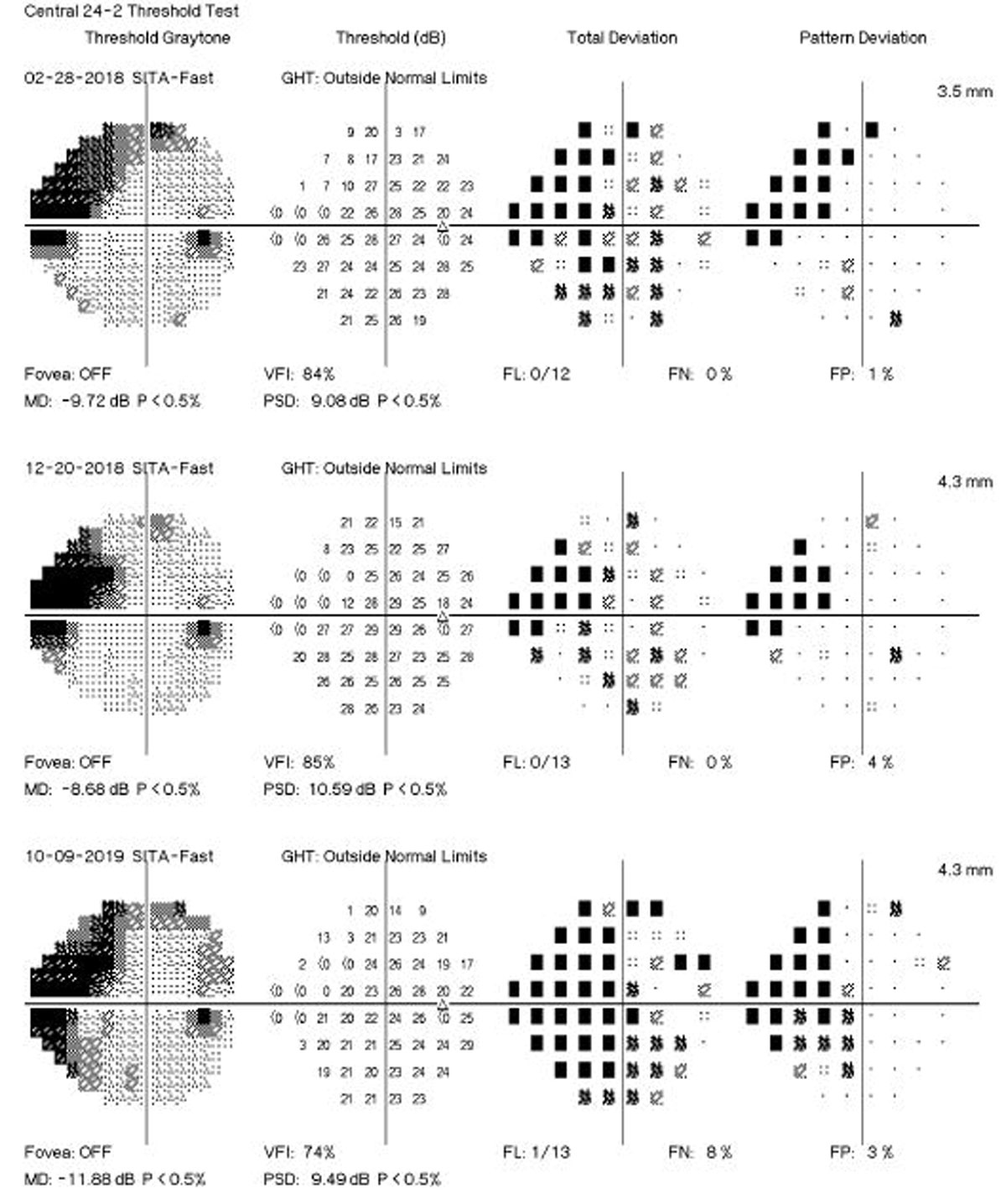 |
| The shorter test time of the SITA Faster perimetry protocol makes patients more amenable to undergoing two tests per eye per session at the outset of care. Photo: Michael Chaglasian, OD. Click image to enlarge. |
The strategy of “front-loading” SITA Faster visual fields (two tests per eye on the same visit) when initiating care of a new glaucoma patient or suspect has been shown to provide repeatable perimetric data at minimal time cost. A new study reports the outcomes of using front-loaded SITA Faster in the evaluation of pointwise visual field (VF) defects in a cohort of glaucoma patients when transitioned from SITA Standard.
A total of 144 eyes of 91 patients with confirmed or suspected glaucoma who had a SS test on a previous visit. The mean age was 68.6 years and 79.2% of patients had a diagnosis of glaucoma. The authors examined pointwise deviation map probability data from three sequential tests—SS followed by front-loaded SITA Faster 1 and 2, to undertake an event-based analysis of pointwise changes seen on SITA Faster 1.
The front-loaded SITA Faster tests provided repeatable VFs that confirmed existing pointwise data on the SITA Standard in 4,661 (62.3%) locations, reversed a SITA Standard defect in 614 (8.2%) locations and demonstrated a new repeatable 48 defect in 406 (5.4%) locations of the pattern deviation grid. A new defect of at least three contiguous points was identified in 20.1% of eyes. The non-repeatable points on the two SITA Faster tests displayed no significant difference in the distribution of defect/non-defect points based on test order or peripheral vs central locations. There was no significant difference in the rate of obtaining at least one reliable test result between SITA Standard and the front-loaded SITA Faster 1 and 2. Test duration significantly decreased from SITA Standard to SITA Faster 1/2 (379 vs 160 vs 158 seconds).
When using only the first SITA Faster test, 73.8% of the points on SITA Faster 1 appeared to confirm locations of existing defects or non-defects on the pattern deviation grid of the SITA Standard test. The remaining points were divided between a possible reversal of a defect or a new defect.
“The second SITA Faster test allowed the distinction between points on SITA-Faster 1 which were repeatable vs. non-repeatable, to provide greater certainty of the consistency of a new defect or reversal of a defect seen on SITA Faster 1,” the authors explained in their article for the Ophthalmology journal. “The front-loaded SITA Faster tests therefore provided repeatable data which reversed a defect found on SITA Standard in 8.2% of locations, and a new repeatable defect in 5.4% of locations.
“Additionally, the repeatable pointwise data demonstrated that 20.1% of eyes fulfilled a previous study’s criteria of a new visual field defect comprising three contiguous points, including one with p <0.01 on two field tests.”
The authors suggest that as SITA Faster becomes more widely adopted in clinical practice, most clinicians should opt to perform a single visual field test for the majority of their patients to maximize the benefits of shorter test durations with SITA Faster compared with older algorithms.
“We propose that front-loading tests, however, provide repeatable data which is particularly useful in several clinical scenarios,” the authors explained in the study. “Firstly, it can be used to establish an accurate baseline of visual field function in newly diagnosed patients—a cohort inexperienced with perimetry and prone to higher rates of unreliable results, as well as in patients who are previously known to display high test-retest variability,” the authors explained in the study. “Secondly, having a pair of front-loaded visual fields can improve the confidence in the interpretation of new visual field defects or apparent reversal of defects.”
Tan JCK, Phu J, Go D, et al. Evaluation of the consistency of glaucomatous visual field defects using a clustered SITA-faster protocol. Ophthalmology. June 21, 2023. [Epub ahead of print]. |

